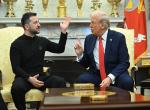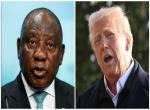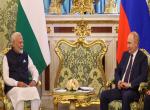Nepal, nestled between the two biggest Asian economies—India and China—is again witnessing political uncertainties. The ruling Left Alliance is on the brink of collapse following the withdrawal of support from the Communist Party of Nepal (Unified Marxist-Leninist) (CPN-UML), a key alliance partner in the Pushpa Kamal Dahal Prachanda-led government.
The CPN-UML has struck a deal with the Nepali Congress party to form the new government. This will be the fourth government since the 2022 parliamentary elections for the lower house—Pratinidhi Sabha. Interestingly, despite being in the minority now, Prime Minister Prachanda refuses to resign.
The CPN-UML has asked the Maoist Centre Party chief and Prime Minister, Pushpa Kamal Dahal ‘Prachanda’, to resign on his own, but he is betting on a Vote of Confidence scheduled for 12 July
. Given the current number game, in which Prachanda is left with just 77 seats, 32 of which are his own, he is set to lose the top post and join the opposition in the house.
Despite being the third largest party in a 275-member lower house, the Maoist Centre was able to bargain the Prime Minister’s post thrice since 2022. The UML, the second-largest party with 78 seats, joined as a junior partner in the outgoing government, which is the major reason behind the fallout of the Left Alliance.
It was not the first time the Left parties had joined hands to form a Left Alliance government. In 2015 and 2019, the Maoist Centre and CPN-UML came together to form the government, but their unity lasted only a short time on all occasions. People hoped the Left ideology would unite the Maoists and the CPN-UML, but they were proven wrong.
In contrast, the Left’s ideological unity is mostly about joining the government. Maoist Centre chief Prachanda and UML chief KP Sharma Oli are strong political personalities. Both have contested for the top post every time they formed the government and again, the power tussle between them is finally out in public.
Away from the politics of parties, this fresh political instability highlights another sad event in Nepal's democratic history. Since the advent of democracy in 2008, no government has been able to complete a five-year term. In the last sixteen years, Nepal has seen more than ten Prime Ministers, close to thirty deputy prime ministers, and a few hundred ministers.
The abolition of the centuries-old monarchical system in 2008 was premised on restoring democratic values—fundamental rights, political and press freedom, and better government—but none of the democratically elected governments have even brought political stability.
In a Westminster-style parliamentary setup, coalitions indicate that the majority rules and Nepal is no exception. But no party wants to be out of power, and if a coalition has numbers to ensure stability, the distribution of power becomes a challenge.
The establishment of democracy in Nepal came after a decade-long Maoist insurgency (1996-2006), followed by the People’s Movement in 2006. This turbulent period claimed at least 17,000 lives. However, whether this political transition has truly benefited the people of Nepal remains a significant and ongoing question.
However, the prospects of political stability under the forthcoming coalition of the UML and Nepali Congress are bleak. Despite their numerical advantage as the two largest parties, the government's stability will be subject to the power equation between KP Oli and Sher Bahadur Deuba.
Echoing Nepal’s political past, it would be a dire miscalculation to expect KP Oli to step down midway from the top post to pave the way for Deuba to lead the government for the next half, which supposedly is part of the understanding.
With KP Oli soon in the driver’s seat, Nepal's foreign policy is set to undergo significant changes. On the other hand, Oli is open about his pro-China stance, and Beijing would like to capitalise on working comfort with Oli.
For China, Nepal is a critical neighbour as it shares a long border with Tibet. A close reflection from the past suggests that Nepal served as the base for the CIA to train Tibetan Khampa Rebels against the Communist forces in Tibet in the 1950s and 60s.
Also, the presence of 15000 Tibetan refugees in Nepal keeps China on a continuous watch for their activities, especially the ‘Free Tibet’ movement. During the 2008 Beijing Olympics, the Left government in Nepal jailed thousands of Tibetan refugees, demonstrating against the atrocities of the Chinese authorities in Tibet.
China continues to fear that any Western or Indian support to Tibetans in Nepal will critically jeopardise the security and peace in Tibet. Therefore, KP Oli’s government will be an opportunity for China to maximise its surveillance of Tibetan refugees.
China would also attempt to pressure the finalisation of the Extradition Treaty with Nepal, which has been pending since 2019. The treaty was scheduled to be signed during President Xi Jinping’s historical visit to Nepal in 2019. However, after protests from civil society and international human rights groups, the Oli government had to withdraw it at the very last minute.
While returning home, Xi Jinping “expressed hope for an early conclusion of the Treaty on Extradition”. If the treaty is signed, it will risk the lives of thousands of Tibetans residing in Nepal without a refugee card. In 1990, the Nepal government stopped issuing refugee cards to any new Tibetan after China strongly opposed such a move.
Besides Tibet, China would want to infuse life into the Belt and Road Initiative (BRI), which has been idle since it was signed in 2017. So far, no single project has moved under the BRI as Nepal is not very keen on taking high-interest loans.
Despite Oli’s China leaning, there seems to be an all-party understanding on not taking Chinese loans. For China, BRI was a symbolic victory over India’s traditional influence in Nepal, and it would want to keep it running, even nominally.
At the same time, India will have to recalibrate its Nepal policy. Oli has a history of playing the China card, especially since 2015 border blockade issue. Relations with Nepal deteriorated after Oli left no stone unturned in swinging the border dispute with India in Nepal's electoral politics in 2019 and 2022.
To make matters worse, Nepal released a new political map showing disputed territories in 2020, which irked India. The anti-India sentiments have contributed to raising the nationalistic temperature in Nepal, which Oli tries to capitalise on. While India’s ties with Nepal remain stable on the economic front, the diplomatic and political sides are likely to be uphill and bumpy.
Not to forget, from sharing a “special relationship” to seeing social media campaigns like #BackOffIndia and #GoBackIndia, especially during Oli’s past terms as the Prime Minister, India has come a long way in handling anti-India sentiments in Nepal.
Amidst an ongoing border conflict with China, Delhi cannot afford to see Beijing’s increasing influence in Nepal. Historically, India’s defence establishment has considered Nepal a strong geographical buffer against China. Even if indirect, any increase in Chinese influence in Nepal could have significant implications for India's security and strategic interests.
Therefore, Delhi must be watchful of Beijing’s political influence in Nepal, especially on the CPN-UML. India must adopt a proactive stance by continuing diplomatic and economic engagement while addressing longstanding issues like border disputes, promoting development cooperation, and ensuring that Nepal sees tangible benefits from its relationship with India.
To conclude, the incoming coalition government of KP Oli’s CPN-UML and Sher Bahadur Deuba’s Nepali Congress may bring short-term stability to the government, but power sharing will continue to threaten the future of the political stability. At the same time, Nepal’s foreign policy will significantly alter for India and may see deeper engagement with China.
(The paper is the author’s individual scholastic articulation. The author certifies that the article/paper is original in content, unpublished and it has not been submitted for publication/web upload elsewhere, and that the facts and figures quoted are duly referenced, as needed, and are believed to be correct). (The paper does not necessarily represent the organisational stance... More >>
Image Source: https://resize.indiatvnews.com/en/centered/newbucket/1200_675/2024/03/nepal-pm-prachanda-with-ex-premier-kp-singh-oli-1709540135.jpg











Post new comment